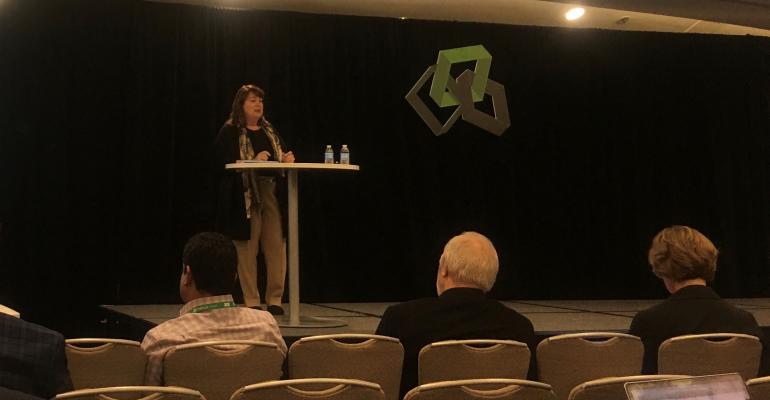The National Investment Center for Seniors Housing & Care (NIC) wrapped up the final day of its 2020 Spring Conference on Friday with discussions on the state of the economy, demographic trends, technology in the seniors housing space and disruption regarding healthcare payment and delivery.
NIC chief economist and director of outreach, Beth Burnham Mace, touched on these trends and how they relate to the seniors housing industry and care sectors.
Here are some takeaways from Friday’s session.
- The coronavirus outbreak is dampening the outlook of the economy, though Mace says the sentiment remains “cautiously optimistic.” The economy is approaching close to 130 months of economic expansion, but the coronavirus is beginning to mount fears once more of an incoming recession.
- U.S. GDP is still expected to grow in 2020, albeit at a slower pace, says Mace.
- A silver lining of the coronavirus outbreak is that low interest rates could help the housing market. The Federal Reserve slashed rates by 0.50 percent in March to a range of 1-1.25 percent in an attempt to stay ahead of disruptions and economic slowdown caused by the rapidly spreading coronavirus.
- Coronavirus fears are negatively affecting supply chain networks, tourism, convention business, airlines and the hotel industry, says Mace.
- Seniors housing operators should also take note that coronavirus’ mortality rate increases with the affected individual’s age. That is putting additional risk into the seniors housing space.
- Wage growth exceeds annual same-store rent growth in the seniors housing space. Assisted living employees wage grew 6.2 percent, while asking rent in assisted living grew 2.5 percent. That is negatively affecting NOI for seniors housing operators. For this reason, Mace says operators should look to potentially hire high school students in their facilities, as this cohort has the highest unemployment rate in the country at 12.6 percent as of December 2019. The national unemployment rate is 3.5 percent as of December 2019.
- Aging 2.0, a global network of more than 40,000 innovators looking to address the biggest challenges and opportunities in ageing, identified various categories of technology emerging in the seniors housing space. These include technologies concerning engagement and purpose, financial wellness, mobility and movement, daily living and lifestyle, caregiving, care coordination and brain health.
- Mace reiterated there is a massive shift undergoing in healthcare delivery and payment models, and that volume driven models will be replaced by value-based models.
- Seniors housing demand remains strong, but demand for new supply is even stronger, though this varies by specific markets. The absorption rate sits at around 86 percent, the highest in the past 10 years. Inventory growth also slowed this past year, after seven years of growth, according to NIC data.
- Occupancy rates greatly vary across the country, says Mace. For example, the occupancy rate in San Jose sits at around 95 percent, the highest ever for this market. On the other hand, the occupancy rate in Atlanta sits at around 82 percent, one of the lowest occupancy rates in the country.
0 comments
Hide comments





